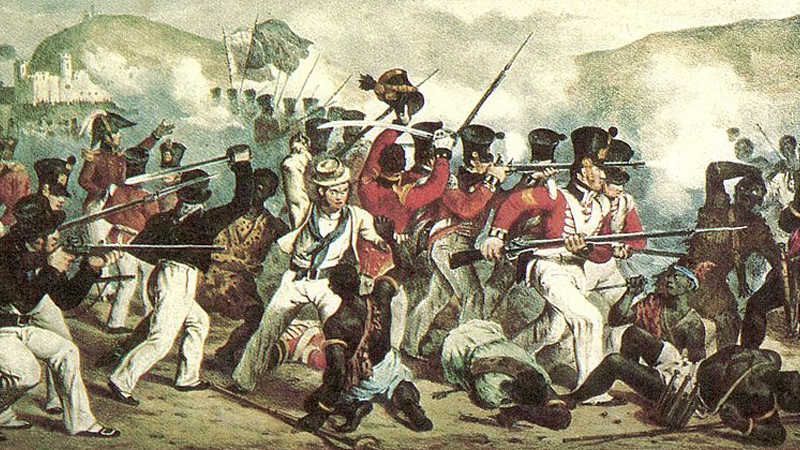Third Anglo-Ashanti War

The Third Anglo-Ashanti War lasted from 1873 to 1874. In 1869, a German missionary family and a Swiss missionary had been taken to Kumasi. They were hospitably treated, but a ransom was required for them. In 1871, Britain purchased the Dutch Gold Coast from the Dutch, including Elmina which was claimed by the Ashanti. The Ashanti invaded the new British protectorate.
General Garnet Wolseley with 2,500 British troops and several thousand West Indian and African troops (including some Fante) was sent against the Ashanti, and subsequently became a household name in Britain. The war was covered by war correspondents, including Henry Morton Stanley and G. A. Henty. Military and medical instructions were printed for the troops. The British government refused appeals to interfere with British armaments manufacturers who sold to both sides.
Wolseley went to the Gold Coast in 1873 and made his plans before the arrival of his troops in January 1874. He fought the Battle of Amoaful on January 31 of that year, and, after five days’ fighting, ended with the Battle of Ordashu. The capital, Kumasi, was abandoned by the Ashanti and was briefly occupied by the British and burned. The British were impressed by the size of the palace and the scope of its contents, including “rows of books in many languages.” The Asantahene, the ruler of the Ashanti signed a harsh British treaty, the Treaty of Fomena in July 1874, to end the war. Among articles of the treaty between H.M. Victoria, Queen of Great Britain and Ireland and H.M. Kofi Karikari, King of Ashanti were that “The King of Ashanti promises to pay the sum of 50,000 ounces of approved gold as indemnity for the expenses he has occasioned to Her Majesty the Queen of England by the late war…” The treaty also stated that “There shall be freedom of trade between Ashanti and Her Majesty’s forts on the [Gold] Coast, all persons being at liberty to carry their merchandise from the Coast to Kumasi, or from that place to any of Her Majesty’s possessions on the Coast.” Furthermore, the treaty stated that “The King of Ashanti guarantees that the road from Kumasi to the River Pra shall always be kept open…” Wolseley completed the campaign in two months, and re-embarked then for home before the unhealthy season began. There were 300 British casualties.
Some British accounts pay tribute to the hard fighting of the Ashanti at Amoaful, particularly the tactical insight of their commander, Amanquatia: “The great Chief Amanquatia was among the killed […] Admirable skill was shown in the position selected by Amanquatia, and the determination and generalship he displayed in the defence fully bore out his great reputation as an able tactician and gallant soldier.”
The campaign is also notable for the first recorded instance of a traction engine being employed on active service. Steam sapper number 8 (made by Aveling and Porter) was shipped out and assembled at Cape Coast Castle. As a traction engine it had limited success but gave good service when employed as a stationary engine driving a large circular saw.
Source: military.wikia.org
